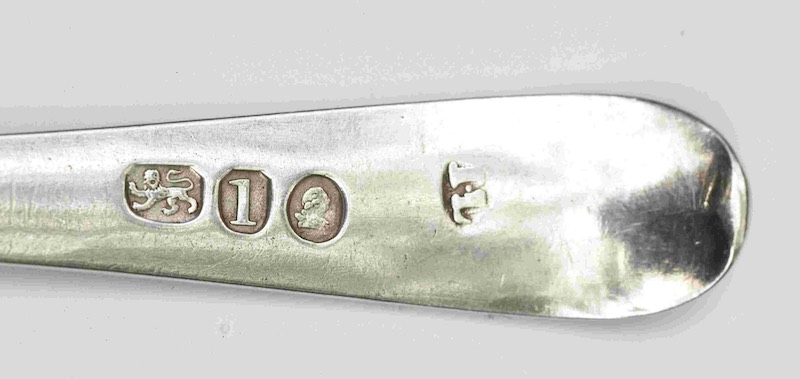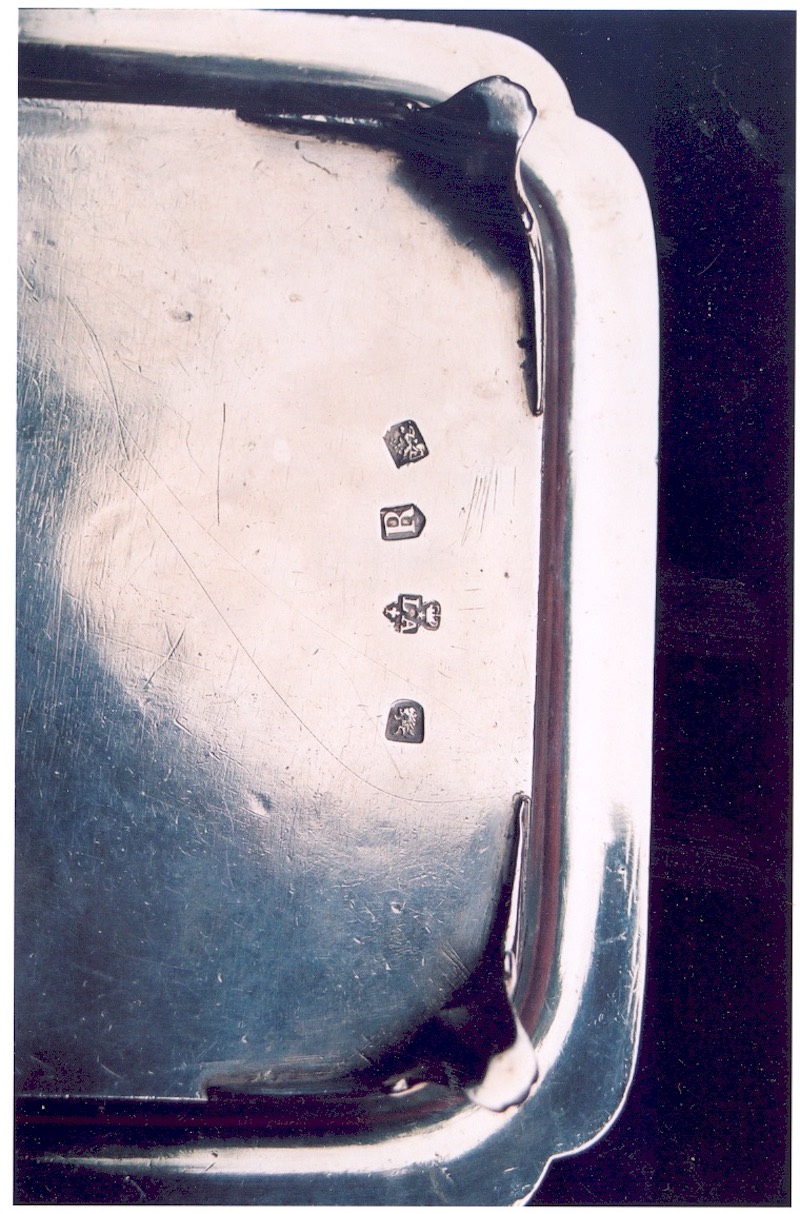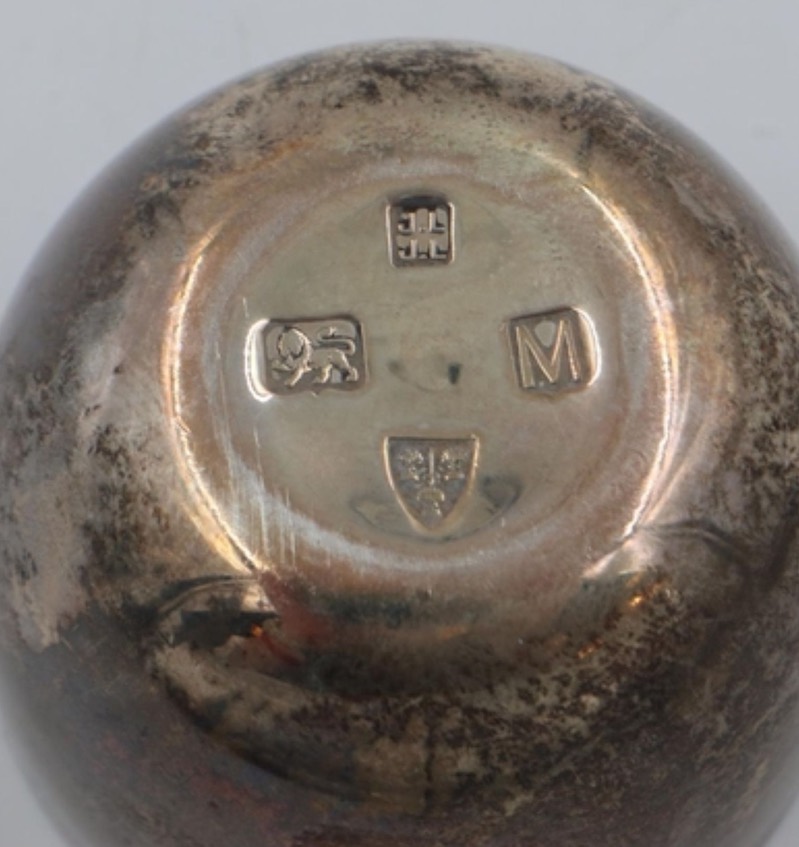CHRISTLETON
Curios and Curioser

BY PHILIP HARLAND
Not any old marks
These are Hallmarks
There’s a unique satisfaction in identifying antique silver through its hallmarks—those small, precise stamps that add to its aesthetic appeal. While collectors and enthusiasts admire these marks for their charm, their origins are far more practical. As a precious metal, silver has been carefully regulated for centuries, with hallmarking dating back to 1300.

Teaspoon hallmarked for London, 1786
By the end of the 17th century, solid silver household goods—known, confusingly as ‘plate’—had become so desirable that silver coins were frequently melted down to meet the soaring demand. In what must have been a desperate attempt to prevent wholesale destruction of British currency, the obligatory silver content of ‘plate’ was raised from 92.5% to 95.84%, a change signified by the ‘Britannia’ gauge.

‘Britannia’ hallmark, 1732
By 1720 things must have calmed down, as the official silver content of artefacts was reduced back to 92.5% known, once again as Sterling, a description that is still valid in 2025. At about the same time a new tax was imposed on silverware and it was not long before counterfeiting hallmarks had become so rampant that parliament was prompted, in 1741 to declare such fraud an act of High Treason—punishable by death!

The Chester Hallmark
How does Chester fit into this 700 year story of hallmarking? Chester, in fact had a Guild of Goldsmiths from much earlier but it was only with stricter legislation that an Assay Office was established here.
It is always a thrill to come across a Chester hallmark, so recognizable with its three wheatsheaves and even more so to find a piece of silver with the stamp of a local silversmith.
A beautifully crisp hallmark for Chester 1962 on a tiny bowl, made by Lowe and Sons just before the Chester Assay Office was closed for good in August that year.

Lowe and Sons produced beautiful pieces, many of them Chester assayed, right up until the closure of the Assay Office in 1962. For anyone fascinated by Chester’s long and illustrious bond with top class silverware, the Chester Grosvenor Museum is the place to go: a whole room dedicated to the topic with scores of pieces on display dating from the very earliest days of gold and silversmithing.